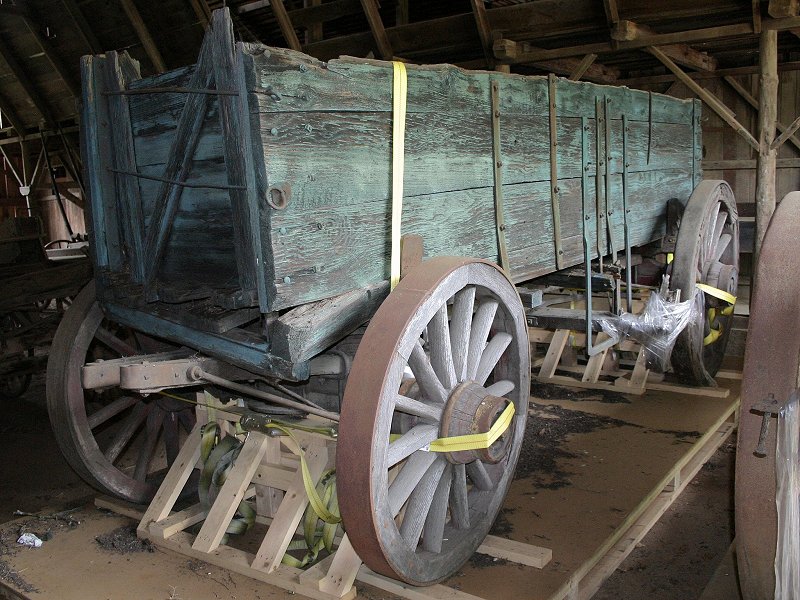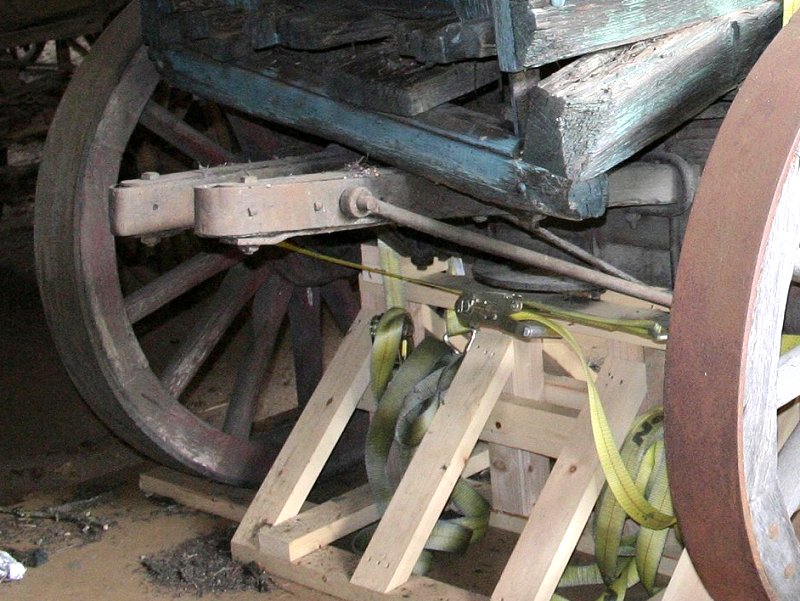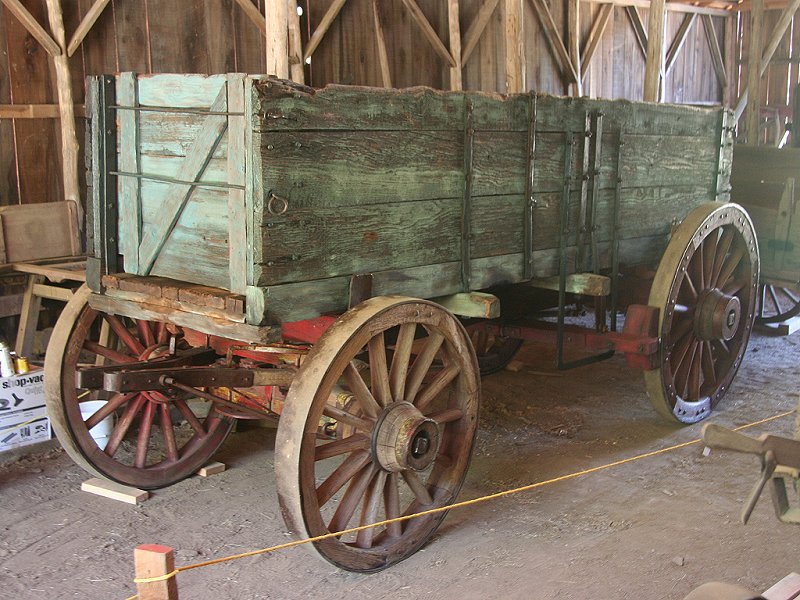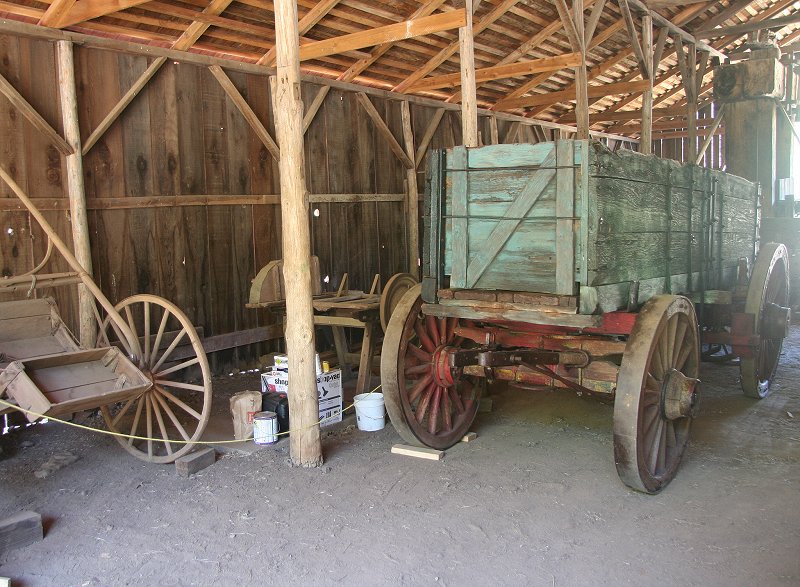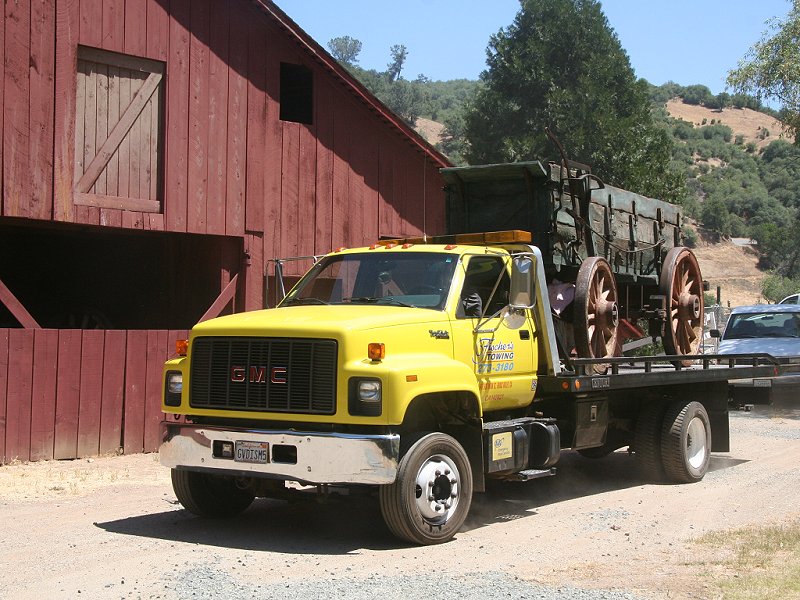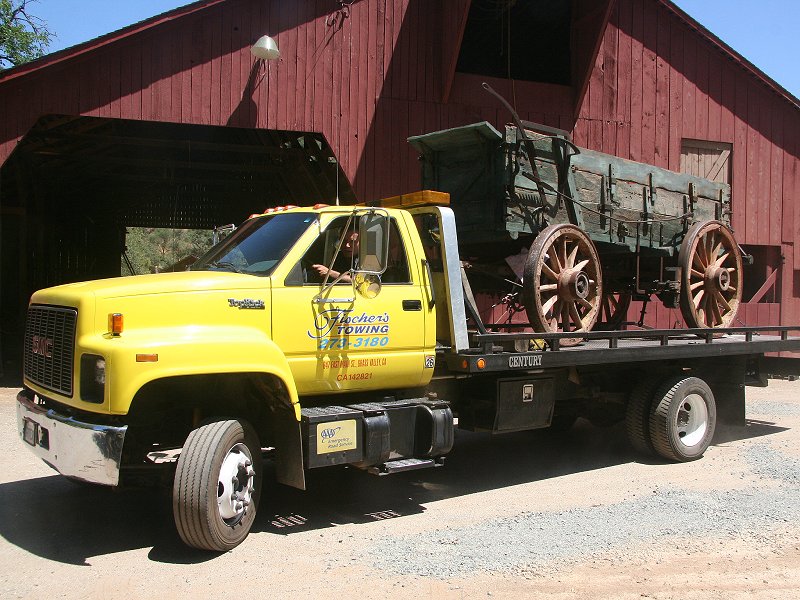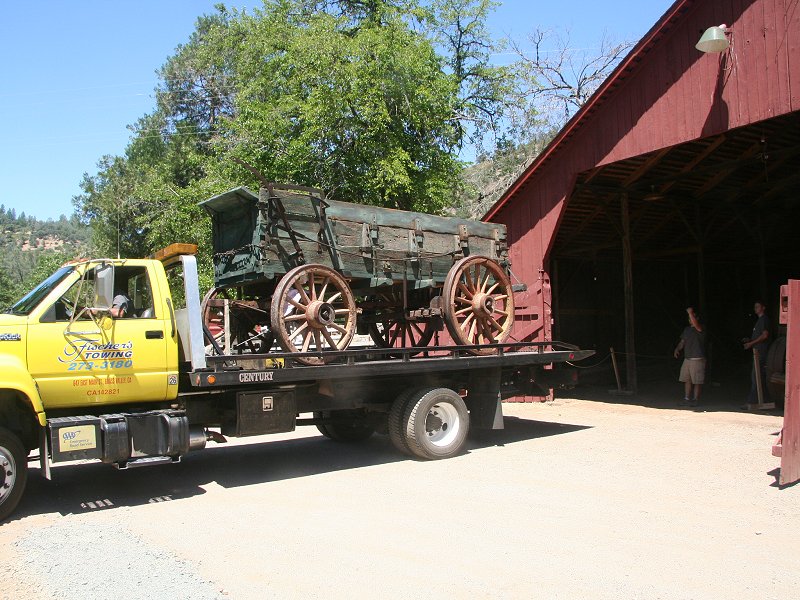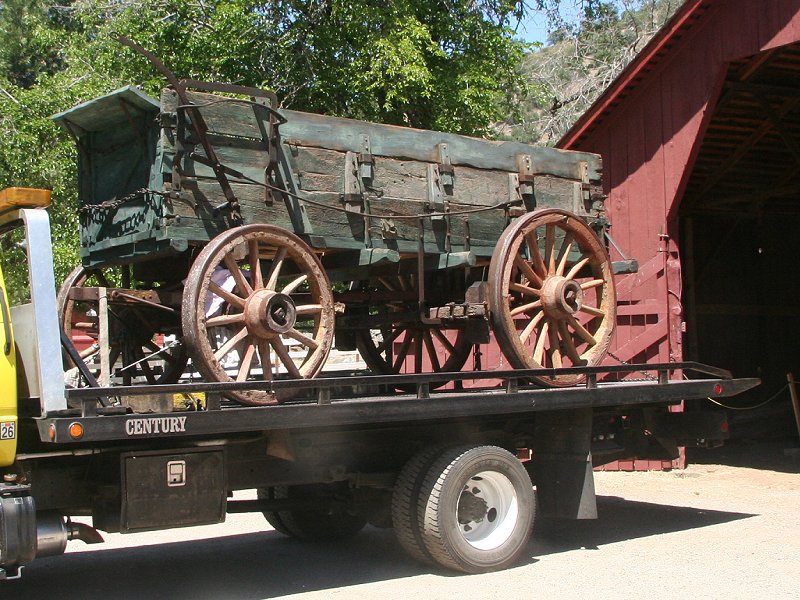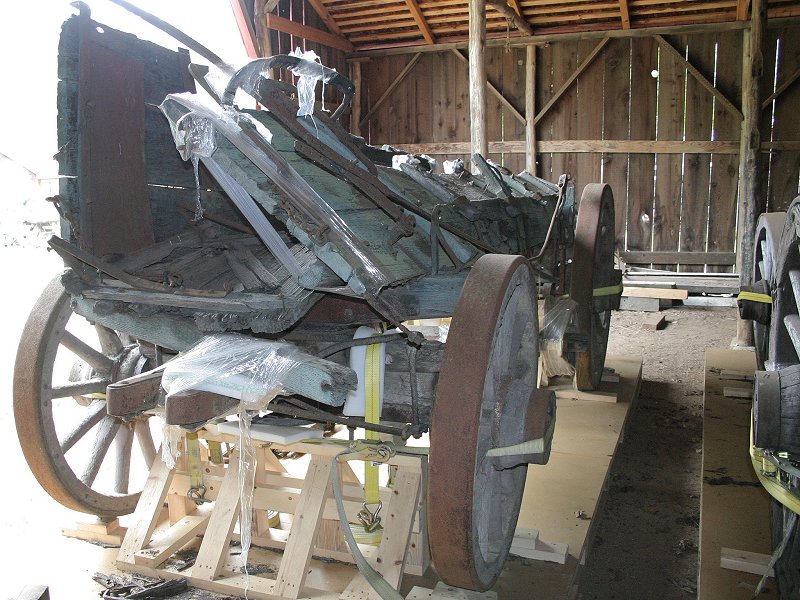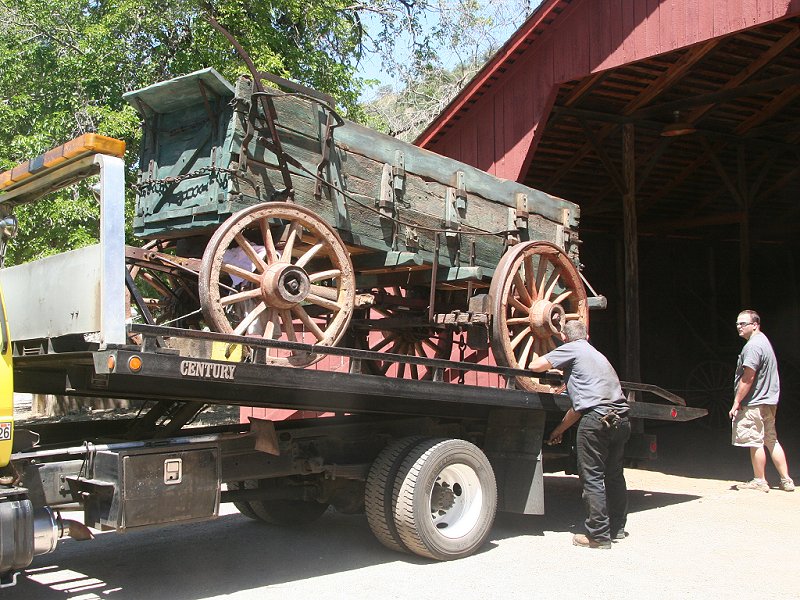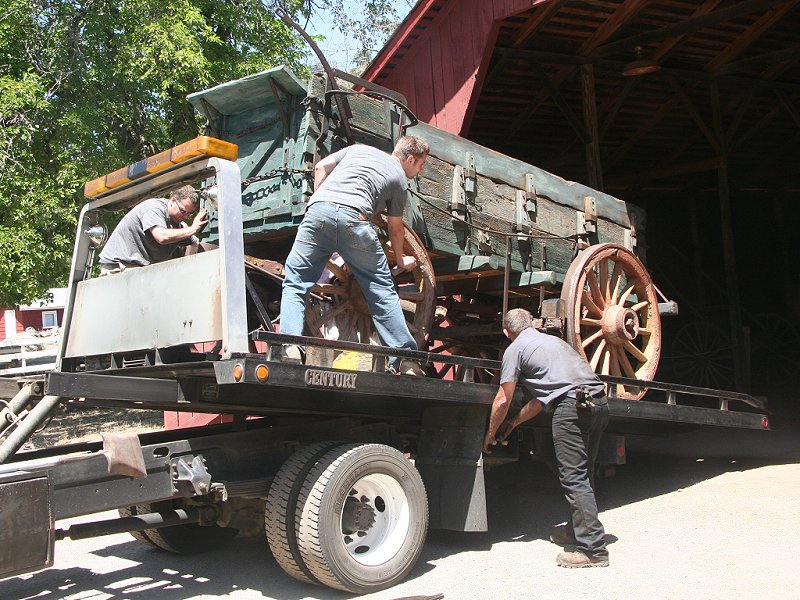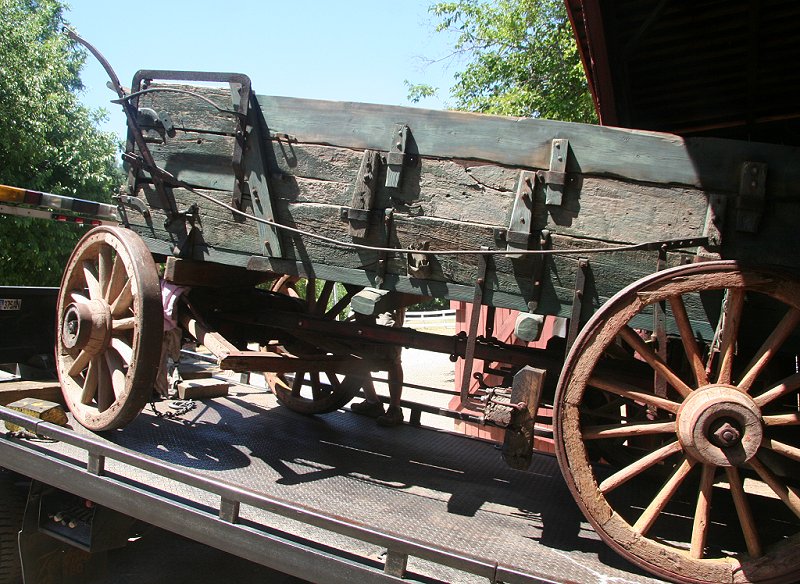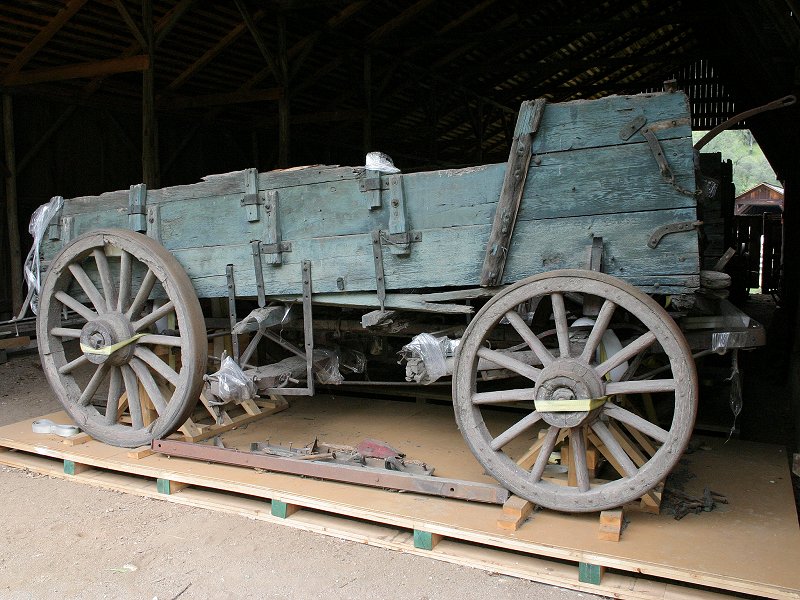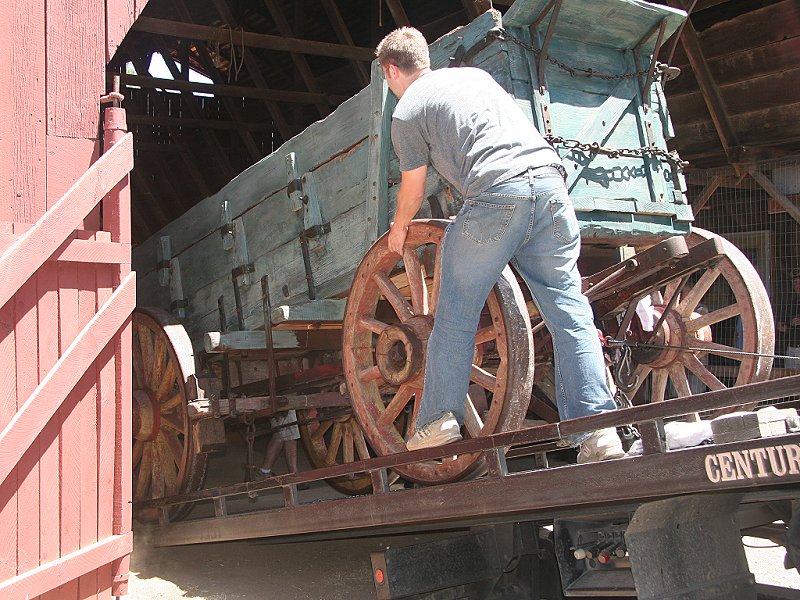
HISTORIC
FREIGHT
WAGONS RETURN
Thursday, June 21, 2007
|
Shortly after our April 24, 2005 Living History Day, the California State Parks Archeology, History and Museums Division, in cooperation with the South Yuba River Park Association, shipped two historic freight wagons from the Historic Barn to Pennsylvania for "conservation." These freighters had been acquired through the state Museum Initiative Unit of the Archives, History and Museums Division, which also provided funds for the conservation from a federal grant. (To see an article and photograph of the shipment in the May 11, 2005 issue of The Union, click here. Note: Be patient, this page takes a long time to load. Also, The Union web archives record is dated 2006, but my records and pictures of the wagons ready for shipment are dated 2005) On that Living History Day, thanks to the foresight of Diane Marten, photographs were taken of the two wagons so we now have before and after comparisons of the conservation. What is "conservation" in this sense? From the pictures below I conclude it is somewhere between very careful cleaning, and restoration, with as little restoration as possible so that the conservation is "reversible." The actual materials and condition of the historic item should be preserved to the extent possible, i.e., "conserved." The two freighters are very similar, the most notable difference being that the brake lever is on the left side of the wagon in one and on the right side in the other. I therefore refer to them below as the left-brake freighter and the right-brake freighter. The first picture below is of the right-brake freighter on its pallet for shipment to Pennsylvania for conservation. This freighter was in reasonably good shape, except for layers of dirt and decay, brake shoes so damaged they were wrapped in plastic, and some broken boards and bend rods. |
